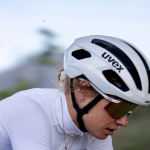Three months after taking the helm at Billabong International Limited, Managing Director and CEO Launa Inman laid out plans to reduce SKUs by 15 percent this year and close 130 stores, but said returning Billabong to prior profitability levels will take up to four years.
Inman unveiled a “Transformation Strategy” that revolves around: monetizing the “phenomenal equity” in its Billabong brand; expanding sales of its RVCA, DaKine and Element brands; growing e-commerce sales globally and integrating its regional supply chains.
Inman, who was recruited from Target Corp. in May to turnaround the Australian action sports giant, unveiled the strategy in a conference call with analysts after discussing the company’s FY 2012 results.
“Billabong is an organization that has had great entrepreneurs within it, and we need to hold onto that,” she said. “But there also needs to be a clear path articulated of what our expectations are and measurements done on a regular basis to ensure that the strategy actually is executed.”
Over the next four years, the plan calls for Billabong to achieve positive sales growth and deliver EBITDA greater than 2.5x FY 2012 pro-forma EBITDA of A$84.0 million, excluding 100 percent of results from its Nixon joint venture and one-time costs incurred in 2012. The strategy is based on an outside review of Billabong’s brands and businesses in Australia and the United States commissioned by Inman. That study revealed that 11 percent of the company’s customers and 22 percent of its 25,000 styles generate approximately 80 percent of its sales. Conversely, 34 percent of the styles generate just 1 percent of sales.
“Now, this actually offers us wonderful opportunities, and what we are going to be doing is we are going to be immediately cutting off the tail,” said Inman. “We're going to be cutting down the number of styles by 15% this year. Depending on how that goes, we'll assess it, we'll then look to reduce it by another 15%. The beauty about this is that it not only saves costs, but enables our designers to actually focus on what we need to do. It enables us to concentrate on delivering the correct proposition to the consumer.”
The company is also evaluating whether to transition smaller wholesale accounts to an online ordering system that would require them to pay up front with credit cards.
Inman said a survey of more than 3,000 Billabong customers worldwide indicates the brand has great growth potential among the 34 percent of customers who live active lifestyles but are not core surf, skate and snowboard participants. Billabong can grow sales to this group generally age 14 to 29 – without alienating the 19 percent of its customers who are core board enthusiasts.
In surveys, these non-core active-lifestyle customers said they favor products, fashion and unique experiences – including “adrenaline rushes” that help define them. Billabong will focus on competing by providing a unique experience both in-store and online and unique, authentic, fashionable and fun product inspired by the youthful board sports culture. Conversely a relatively small number of people who know the Billabong brand are actually buying it.
Another big opportunity for Billabong brand going forward will be a more methodical approach to sharing best practices, successes and trends among designers in the United States, France and Australia. Inman said she sees the opportunity to increase Billabong brand sales by A$25 million annually short term.
Billabong can unlock another A$40 million annual value by growing sales of Element, DaKine and RVCA. Although these brands are not as well known as Billabong, a higher percentage of consumer who do know the brands have bought those brands or been converted – in the last year. In other words, increasing marketing of these brands will result in outsized returns relative to other brands in the company’s portfolio. Initiatives will include testing each brands’ ability to expand into new categories.
While Billabong will also focus on improving merchandising at its stores, Inman said the company will operate fewer stores going forward. Only after it gains better insight into consumer preferences perhaps as much as two years out – will it begin rolling out new stores.
Inman identified e-commerce as one of the most exciting opportunities facing the company. The company is considering up its stake in the Australian online store SurfStitch, which is expected to grow by two-thirds to A$50 million in sales this year. In the United States, it owns Swell, which is already doing A$20 million in sales. These stores sell more than 300 brands, giving Billabong insight into broad market trends.
“Many companies feel threatened by e-commerce,” she said. “We, in fact, are embracing it.”
Over the coming four years, Inman envisions launching online stores for each of Billabong’s brands and then combining them on a single Oracle platform with their brick-and-mortar stores to create a seamless omni-channel experience for consumers. That will require up to A$80 million in capital expenditures on IT and other investments need to better integrate the company’s supply chain in a way that leverages the disparate brand’s combined purchasing power and speeds time to market.















